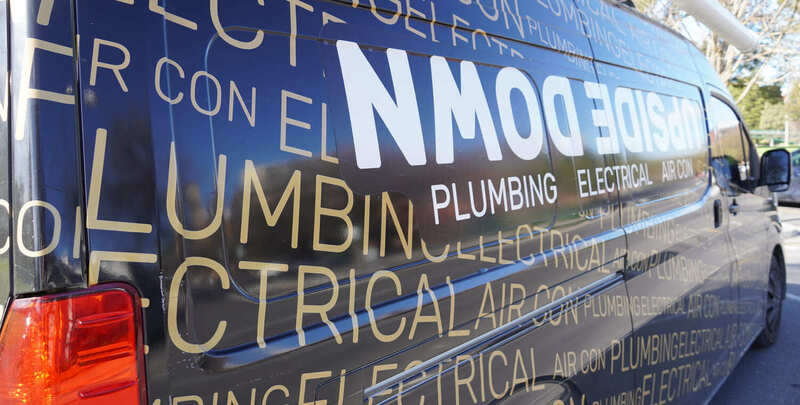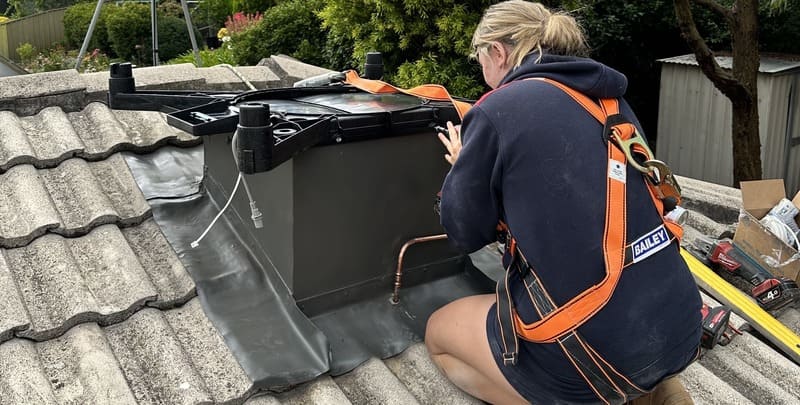5 Common Problems with Your Evaporative Air Cooler

As the mercury soars and the sun beams down on us with all its might, evaporative air coolers offer welcome relief and climate control comfort. However, these eco-friendly systems don’t suit all types of Aussie heat.
Known for their energy efficiency and ability to inject fresh air into our homes, these units have become synonymous with summer comfort. But as with any system, they’re not immune to hiccups and problems.
So, let’s chat about a few common issues you might face with your evaporative cooler and why it’s wise to have a pro have a gander at them.
Why Evaporative Coolers are Worthy
First up, is the evaporative air cooler any good? You bet! These systems are lauded for their ability to offer cooling by harnessing evaporation – simple, but brilliant.
They draw warm air across water-moistened pads, the water evaporates, and voilà, the air temperature drops, delivering cool air into your room. Their energy-efficient operation means they use less electricity, and they can be a boon for those with asthma since they rely on water to filter and moisturise the air.
And here’s a nifty feature: Australian-designed models cater specifically to our unique environment.
Trouble in Paradise: The Flip Side of Evaporative Cooling
However, the road to cooling nirvana can have its bumps. The disadvantages of evaporative cooling units lurk beneath the surface, often related to maintenance and environmental conditions.
With high humidity, your evaporative air cooler might struggle because the air’s already full of moisture, and it can’t take any more on – so the cooling effect dwindles.
Five Sticklers That Could Spoil Your Chill
What are the main problems with using an evaporative cooler? Here are the five main culprits.
- Maintenance mayhem: Like any system, evaporative coolers need regular check-ups. Dirty cooling pads, clogged filters, or dodgy motors can stomp on your cooling unit’s ability to circulate fresh, cool breeze. Don’t wait for the sweltering peak of summer to check if your unit’s in tip-top shape.
- Imbalanced humidity: Got an issue with humidity? These devices shine in dry heat as they add moisture to the air – an unsung hero in arid zones. But in an already damp room, adding humid air is about as useful as an ashtray on a motorbike. They just can’t evaporate enough water to cool your space effectively.
- The conundrum of costly water usage: It’s no secret that evaporative coolers use water to run. If they’re not maintained, you might find them thirstier than a footy team after finals, pulling more water than necessary. It’s important to ensure that the system’s water usage is optimised.
- Window woes – to open or not to open? To the question, “Do you need to have a window open with evaporative cooling?”, the answer is a resounding yes. These systems need an escape route for the moist air they produce. Without an exit, the room can become as stuffy as a crowded lift. Cracking a window or door helps maintain the cooling process effectively.
- The cool can be unequal: Can you cool a room with an evaporative cooler? Sure, but it can be a bit of a hit and miss. Air distribution might be less consistent than traditional air conditioning. It means that while your lounge might be breezy, your study could still feel like the inside of a pie warmer.
The Benefits of Evaporative Cooling
We’ve examined some of the downside, let’s take a closer look at the some of the many benefits of using evaporative cooling:
- Energy efficiency: Evaporative coolers consume significantly less energy compared to traditional air conditioning units, making them a cost-effective cooling solution.
- Environmentally friendly: These coolers use only water and air to cool the surrounding environment, eliminating the need for harmful refrigerants commonly found in air conditioners.
- Improved air quality: Unlike air conditioners that recirculate indoor air, evaporative coolers constantly draw in fresh air from outside, promoting better ventilation and air quality.
- Humidity regulation: Evaporative cooling adds moisture to the air, which can be particularly beneficial in arid climates where dry air can cause discomfort and health issues.
- Easy maintenance: Evaporative coolers have simple designs with fewer mechanical components, resulting in easier maintenance and lower maintenance costs.
- Portability: These coolers are often lightweight and portable, allowing for easy installation and relocation to different areas as needed.
- Quiet operation: Compared to the noisy operation of traditional air conditioners, evaporative coolers typically operate quietly, making them suitable for both indoor and outdoor use without causing disruption.
- Versatility: Evaporative coolers can be used in various settings, including residential homes, commercial buildings, outdoor events and industrial facilities, providing versatile cooling solutions for different environments.

It’s a Job for the Pros
Despite their relatively simple design, when issues arise, it’s best to resist the DIY itch. A professional has the know-how to tackle everything from a basic service to fixing those more puzzling problems. Plus, they can advise on the latest models and upgrades like a next generation controller for your system, ensuring your entire house stays blissfully cool.
Remember, an evaporative cooler’s performance is linked to regular checks and a keen understanding of the environment it operates in.
So, keep an eye on the condition of your unit, swing those windows wide open, and let the fresh, cool breeze take the sting out of those hot summer days. And if your cooler seems off colour, don’t dither – get on the blower and request the expertise of a licensed professional. They’re the real MVPs in safeguarding your summer cooling oasis.
Please note: This information is provided for advice purposes only. Regulations differ from state to state, so please consult your local authorities or an industry professional before proceeding with any work. See our Terms & Conditions here.